Love him or hate him, artist David Černý has a way of keeping himself consistently visible. Born in Prague in 1967, Černý’s climb to the title of Czech enfant terrible began in 1991 when he, along with some friends, decided to paint a Soviet tank – a memorial to the liberation of Czechoslovakia in 1945 – pink.
Eighteen years later, Černý made international headlines with his “Entropa” sculpture in 2009. Commissioned to mark the start of the Czech Republic’s EU presidency, the piece, which was meant to be a collaboration between Černý and artists from the 27 EU countries, was revealed to be a solo project created by Černý and two friends, which depicted the member countries through satirical stereotypes including Bulgaria as a Turkish toilet and Italy as a field full of masturbating football players.
PARTNER ARTICLE
His most recent piece, created for this year’s summer Olympics, didn’t ruffle any feathers, but did manage to garner the artist worldwide attention. Fashioned from an old double-decker bus, “London Booster” saw the repurposed Routemaster get a workout via its two gigantic arms doing push-ups.
Along with Černý’s ability to entice people and also infuriate them, part of his visibility factor is that the majority of his sculptures can be found in public spaces. Quietly tucked into corners or curiously climbing up towers, many of his works can be found on Prague streets. Adding to the character of the city, and in some cases defining it, Černý’s pieces provide points of interest throughout the city that can be stumbled upon, perhaps contemplated or just enjoyed as part of the scenery.
Quo Vadis
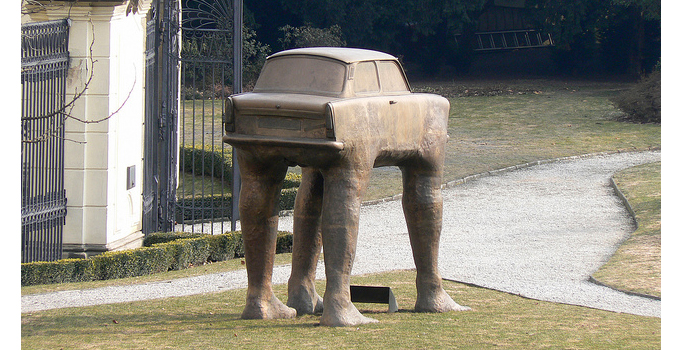
As with Černý’s London Booster, this piece is another inanimate object with human features. One of his earliest works – created post-revolution, in 1990 – “Quo Vadis” is a bronzed Trabant car with four legs. Originally exhibited on Old Town Square as part of the “Old Town Courtyards” exhibition in 1991, Quo Vadis was then permanently placed in the gardens of the German Embassy in 2001 where it continues to reside today. Made in fiberglass, the piece marks the mass exodus of East Germans who camped out in the gardens of the embassy before being granted permission to travel freely to West Germany in ‘89. Among the 4000 Germans who stationed themselves there, many left their Trabants behind. Along with four legs, Černý’s Trabant also has its own pair of balls.
Piss
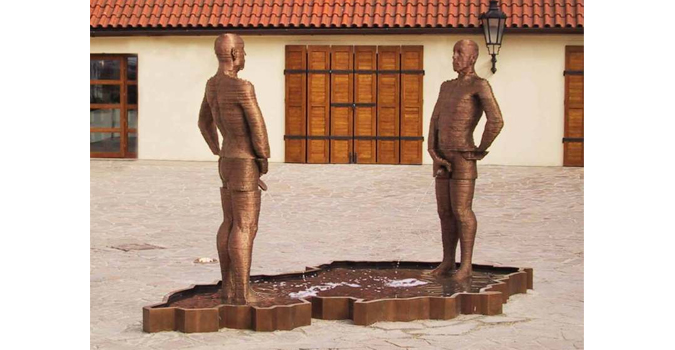
Speaking of penises, Černý’s 2004 “Piss” features two bronze figures with swiveling hips and moving male genitalia, from which steady streams of water write out quotes from famous Czechs into a pool shaped like the Czech Republic. If you call the number listed nearby the sculptures, you can send a text message and the figures will write out your words. In a 2009 interview with Černý by The New York Times, it was written of Černý’s thoughts on the piece “To Mr. Černý [the figures] are an apt commentary on the self-deprecating Czechs, who he contends have gritted their teeth through centuries of invasion and occupation, barely resisting and seldom winning at anything.” Piss is located in Malá Strana by the Kafka museum at the Herget Brickyard (Hergetova Cihelna).
Horse

One of Černý’s most well-known pieces, “Horse” is that massive structure hanging from the ceiling in Lucerna passage, often surrounded by tourists taking pictures of it. Created in 1999, the polystyrene sculpture was originally meant to hang in the hall of the main post office on Jindřišská street, but as is written on Černý’s website, the director of the Czech post office said it ‘was way too much,’ not specifying exactly what he meant. Its current location, which the piece has called home since 2000, brings it just a touch closer to the St. Wenceslas equestrian statute of which it is a parody. You can almost touch the tongue of the upside down, dead horse on top of which (on the horse’s belly) sits the patron saint.
Hanging Out/Viselec
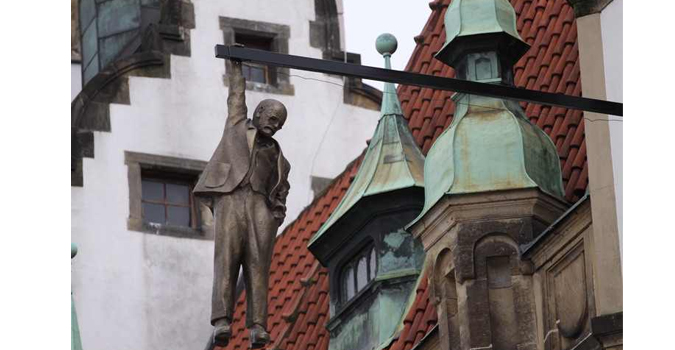
Another of Černý’s hanging sculptures, “Hanging Out” happened to unexpectedly catch my attention years ago. I was actually further surprised when I heard it was Černý’s. Besides the hanging factor, it seemed to be a bit of a departure from his other works. However, it has proved to have the same shock value of some of his pieces; when Viselec was displayed in Grand Rapids, Michigan in the U.S., many panicked phone calls were placed as the people thought the sculpture was someone attempting suicide. Created in 1997, the tiny figure of Sigmund Freud, who hangs by his right arm and has the hand of the other in his left pocket, is said to reflect Černý’s thoughts about the role the intellectual would play in the new millennium. Located on Husova street near Betlémské náměstí, the bearded figure has made the rounds to Malá Strana, Berlin, Stockholm, and London.
Tower Babies and more Babies

Crawling up one of the city’s most prominent landmarks, Černý’s “Tower Babies” are without a doubt his most visible work in Prague. Since 2001, the 10 fiberglass, alien-like little ones have been permanently installed on the Žižkov TV Tower. His Babies, however, were first presented in 1994 at the Chicago Museum of Modern Art, followed by appearances in various other cities including London. The tower project came about in 2000 – the year Prague was a Cultural Capital of Europe. Černý, who was at the time living in Žižkov, was asked to create a temporary project to honor the occasion. Due to the public’s appreciation of the babies, it was decided that they would remain. To see them up close, there are three bronze babies crawling in a corner next to Museum Kampa.
Embryo

One of Černý’s lesser-known public art works in Prague is entitled “Embryo”. The pink blob hangs on a drainpipe on the façade of Divadlo Na Zábradlí. Installed on December 9, 2008, the piece was placed there to mark the 50th anniversary of the theater. At night, via an internal light, it glows.
The following four Prague-based Černý pieces are connected to galleries – so they’re not wholeheartedly public space pieces – but they’re still worth mentioning.
Brownnosing
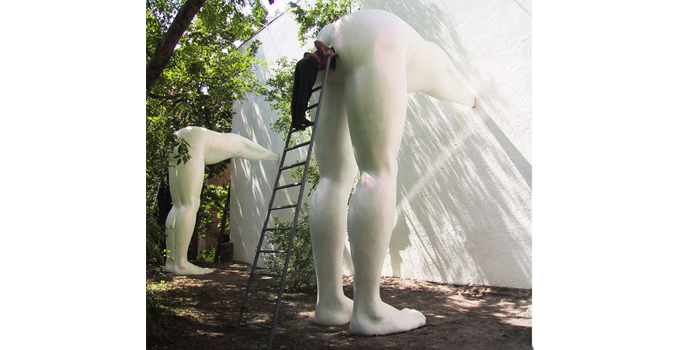
Located in the garden of the Futura Centre for Contemporary Art in Smíchov, Černý’s “Brownnosing” is comprised of two gigantic lower body halves of which you can climb up ladders to stick your head into their anuses to watch videos of (Černý’s so-called nemeses) Václav Klaus and former director of the National Gallery Milan Knížák feeding one another to the tune “We Are the Champions”.
Guns and Shark

Four gigantic black guns, which face one another and make various sounds other than shooting noises, are on long-term display in the courtyard of AMoYa (Artbanka Museum of Young Art). Created in 1994, the piece was installed in the former World Trade Center in New York. Along with Guns, Černý’s “Shark” (2005), another controversial piece said to be a direct parody of Damien Hirst’s “The Physical Impossibility of Death in the Mind of Someone Living”, is also on long-term display in AMoYa’s courtyard, in a small room on the left side.
Meat
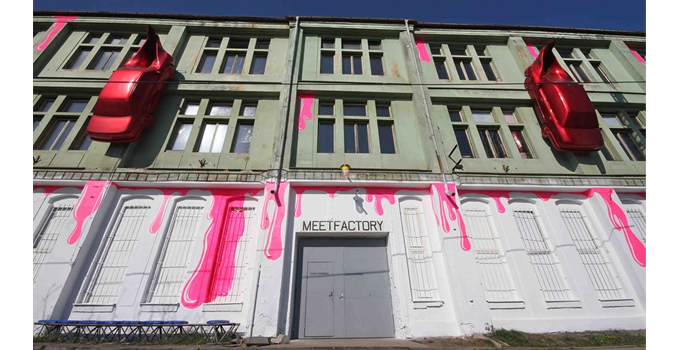
Hanging outside MeetFactory – the arts and cultural venue founded by Černý in 2001 – you’ll find two bright red cars on the façade of the building. Created in 2000, the work was originally displayed at Prague’s Veletržní Palác on the occasion of Černý’s win of the Jindřich Chalupecký Award. Check out this video interview Expats.cz did with Černý in 2011 to learn more about MeetFactory and the artist, and to see some images of his work.
Related articles











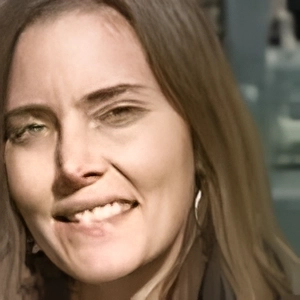
 Reading time: 6 minutes
Reading time: 6 minutes 




























